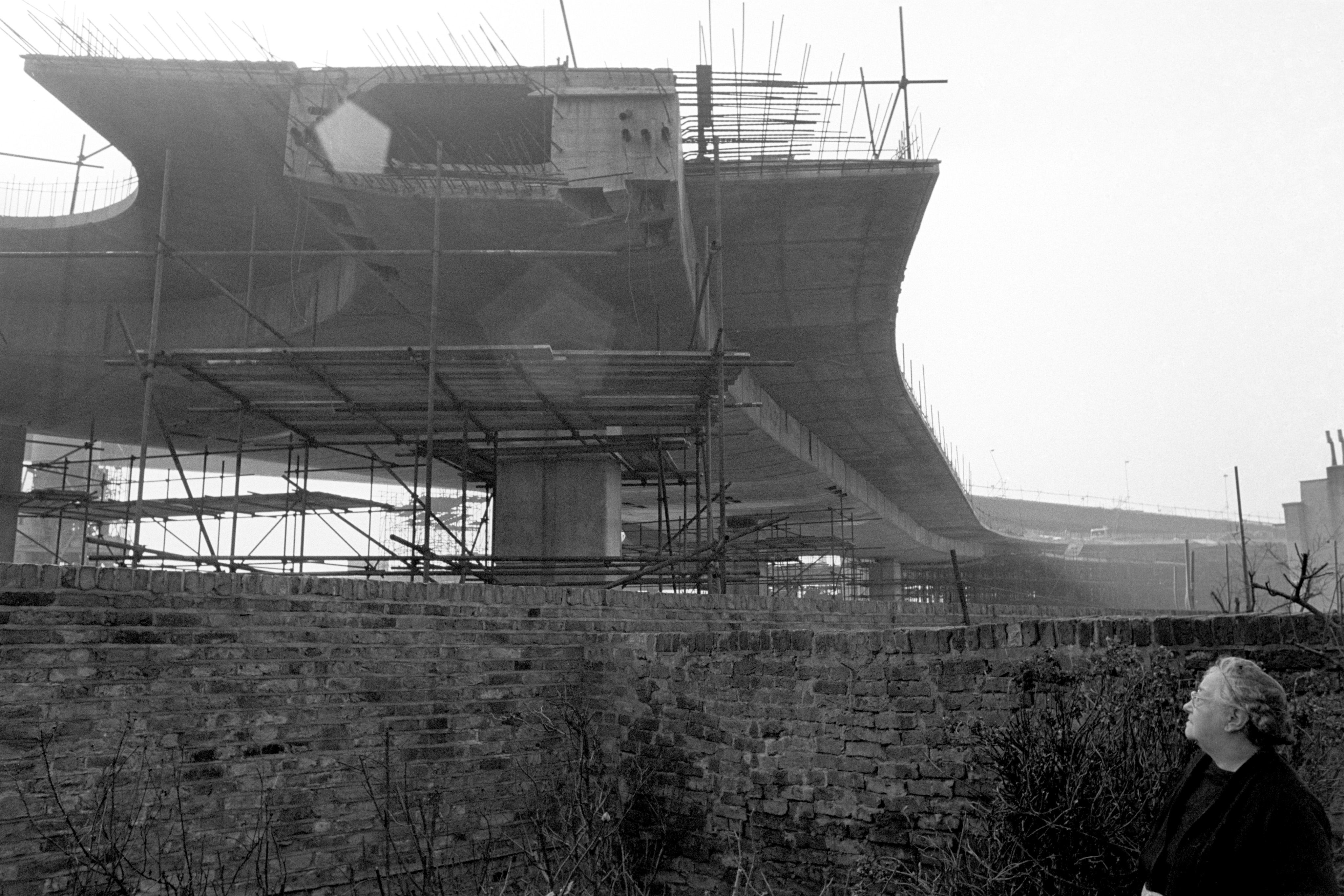
When I was growing up, my parents used to sometimes tell me that ‘they’ nearly knocked down our house to build a motorway, writes Thomas Ableman.
I didn’t really take much notice. (They were my parents. One didn’t. Now I am a parent, I regret this). But when I grew older, I looked into what they’d been going on about. It’s a salutary reminder of why we need to keep reminding the world of the need for outstanding public transport.
PREDICT AND PROVIDE
In the 1960s, highway planning was dominated by the idea of ‘predict and provide’ – work out how many car journeys there will be in ten years time, and then build the roads needed to accommodate them. As car ownership was growing and public transport was not, London’s highways planners kept predicting they’d need more roads.
So they set about providing them.
THE RINGWAYS

The dotted lines are the motorways planned but never built. Map: roads.org.uk. *London Ringways Plan from the late 1960s showing roads planned for Ringways 1, 2, 3 and 4 indicating those sections of roads that were built and those sections not built. –DavidCane 15:41, 4 February 2007 (UTC) Revised to correct misnaming of Wrotham Heath as Wrotham Green. –DavidCane (talk) 00:29, 2 March 2008 (UTC)
This map looks so simple and innocuous, but it shows the plan that was developed in detail and started.
It shows four circular ringways, all motorway-standard, plus radial connecting routes. You see that “1” marked on the map between Hampstead and Hackney? That’s roughly where my parents’ flat still is – but wouldn’t have been.
Just let me list some of the places that would have been destroyed had this happened. Camden Town, Hackney Central, Oxleas Wood, Clapham High Street, Brixton , Blackheath Village, Peckham Rye and Kings Cross. My parents’ flat in Chalk Farm was in a modern, pretty ugly block, so certainly wouldn’t have been mourned by anyone. But they love it!
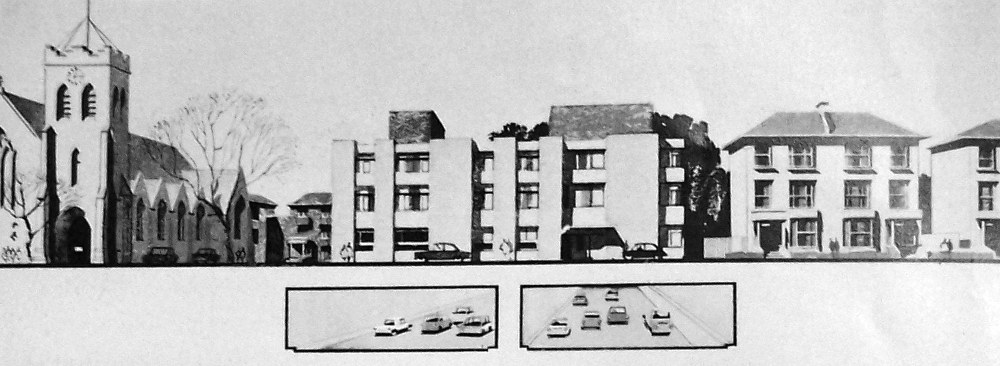
Artist’s impression of the cut-and-cover tunnel under Belsize Park, with new buildings on the roof of the motorway.
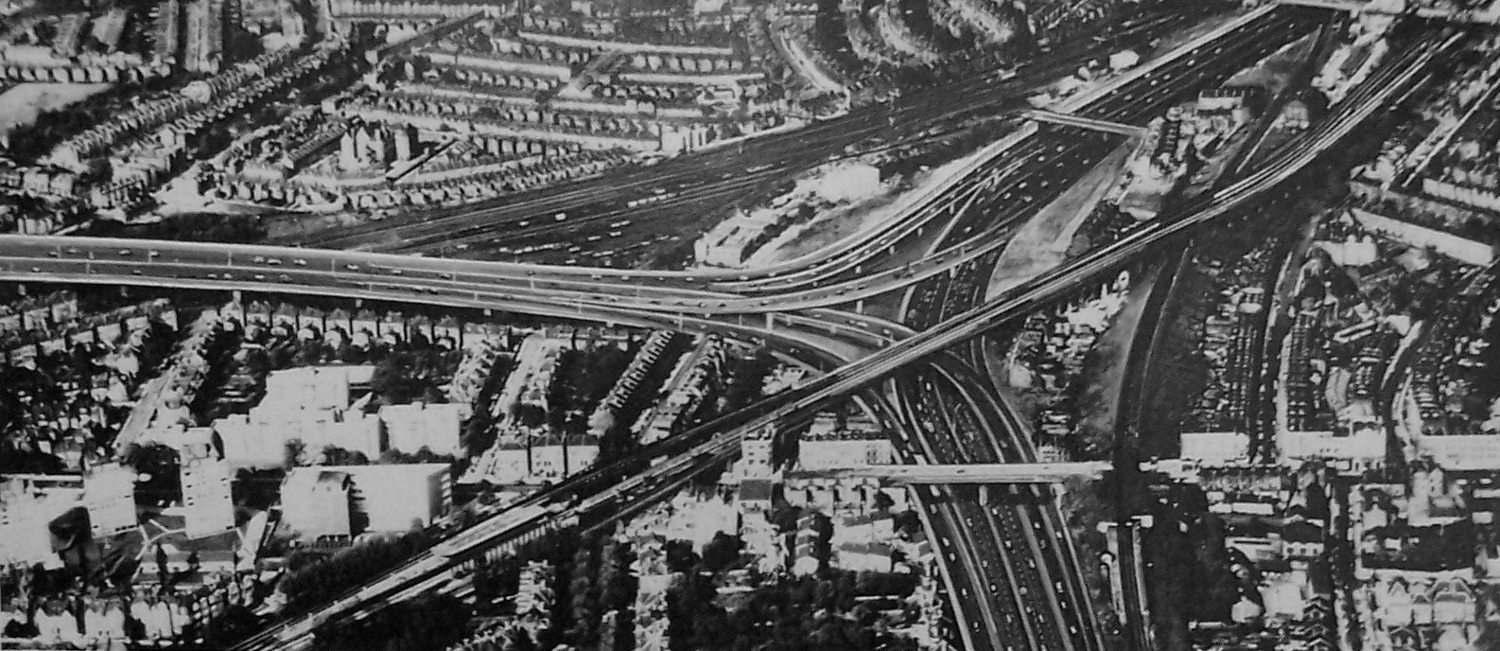
Artist’s impression of the interchange between the North Cross Route and M1 at Kilburn. The North Cross Route runs top to bottom, with the M1 heading away to the left. via Roads.org.uk
Have you been to Dalston at all? Here’s what it would have looked like had this plan happened:
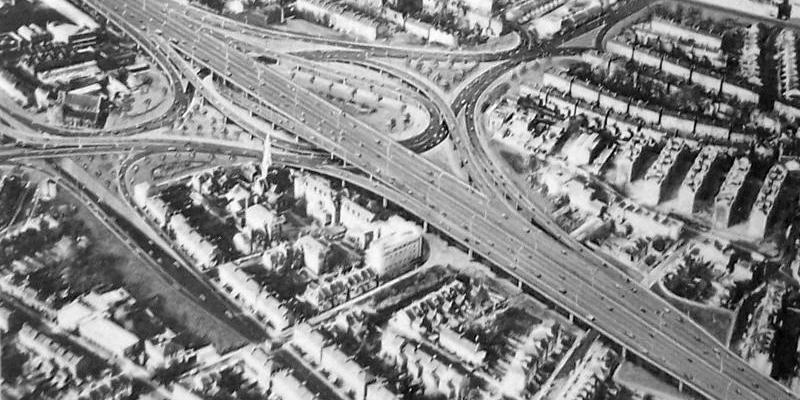
Dalston Junction (no, not that one!). GLC, January 1967
What about Camden Market? You know the famous Stables Market? The one that tourists from all over the world visit? Well, it’s completely buried by the junction of Chalk Farm Road, the North Cross Route motorway and the Euston bypass.

Think the Northern line’s complex? Think again… Map credit: roads.org.uk
While this artists’ impression of the new, improved Brixton shows how in thrall planners were to an American vision of urban modernity:

Brixton town centre as you’ll never see it. Photo of Lambeth Council document by Chris Marshall at roads.org.uk
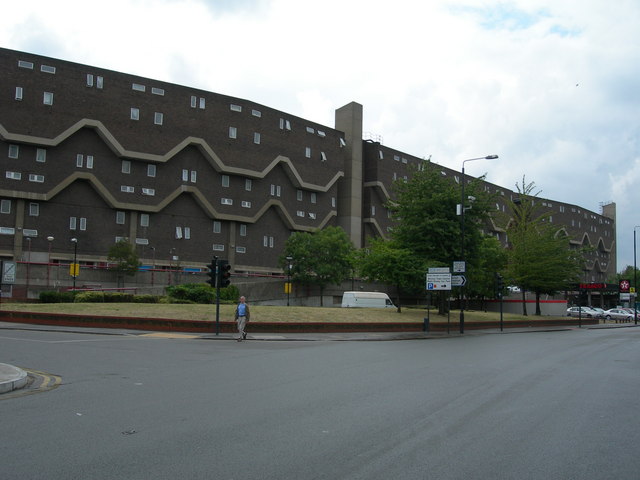
Southwyck House in Brixton was specifically designed to shield the housing estate behind it from the noise of Ringway 1 – by Danny Robinson
THERE BUT FOR THE GRACE OF… PEOPLE LIKE YOU
Now, I know what you’re thinking: “Loads of crazy stuff was planned in the 1960s. This was never actually going to happen. After all, this is the same decade that they planned to cover the whole of Soho in a glass roof.”
Well, you’re right: that Soho glass roof thing was probably never going to come off. Though it was planned.
But the truly terrifying thing about this was not just that it was going to happen, but that they actually started!
Look carefully at the non-dotted bits of the map at the top and you’ll see some bits of road you recognise.
Ever wondered why there’s an elevated section of the A40? And why there’s just one completely random section of dual-carriageway that goes south from the A40 past Westfield and then suddenly stops at Shepherd’s Bush Roundabout. Well, that random section used to be a full-width motorway and was the first section of the ringway built. And the elevated section of the A40 was the first section of radial built.
Here’s a picture of the junction at White City, just after it was opened:
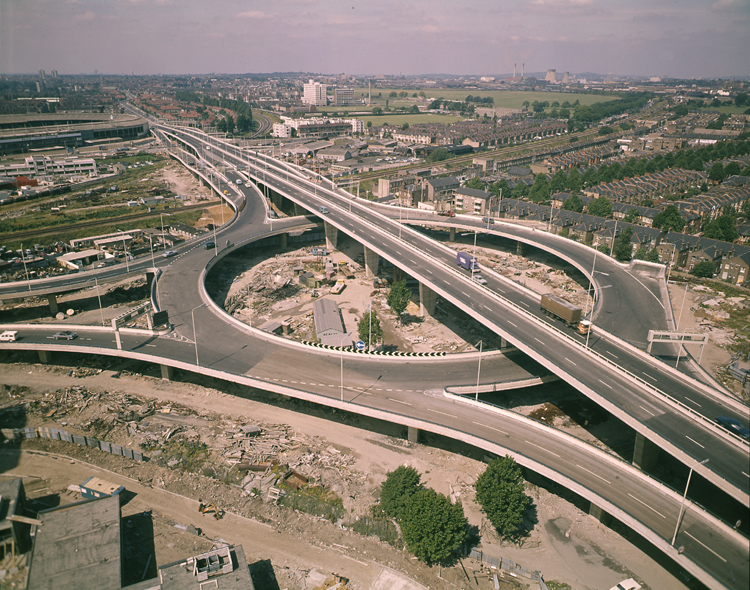
Elevated junction of the West Cross Route and Westway shortly after opening. The West Cross Route would have continued under the roundabout with the stubs linking to the northern slip roads.
Do you see that the stubs coming off on the right-hand side? They were the start of the slipways leading from the roundabout onto the motorway that was then going to snake through Kensal Rise Cemetery, under Belsize Park, through Camden Town, Islington and Hackney and wind up near Victoria Park.
Those stubs are still there; a reminder just how close we got to destroying vast swathes of London’s most beautiful neighbourhoods.
At Victoria Park, we then have another long length of ringway that was actually built before the plans were pulled. The section of road that is now the A12 north of the Blackwall Tunnel and the A2 south of the Blackwall Tunnel were actually the Eastern side of Ringway 2.
I stood on the footbridge that links Victoria Park with the Olympic Park with my daughters a few weeks ago. This is the view:
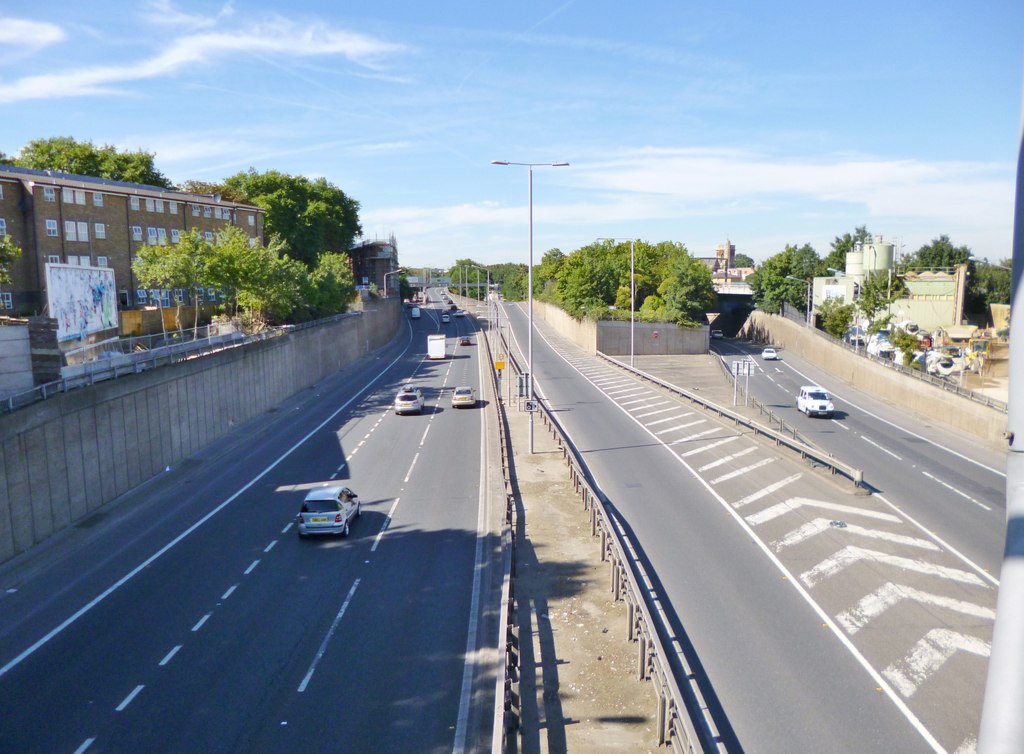
The East Cross Route at Hackney Wick. The central slip road is the only part of the North Cross Route to be constructed and would have carried the merging eastbound carriageway of that road – by Michael Faherty
You’re looking north along the A12 here. The reason for the big space in the road with trees? Because that’s where the motorway from Hackney, Camden, etc should have merged into what is now the A12. You can literally see where they’d got to when the bulldozers stopped.
The sections of ringway that were built opened in 1970. One year earlier, a report had revealed that 1 million Londoners would have their homes ruined by living within 200 yards of a motorway. The report also made the obvious point that all the capacity of the motorways would never be used, as they’d be overwhelmed by congestion at the junctions when thousands of cars attempted to navigate onto narrow residential streets.
The sections opened in 1970 turned out to be the last. But the Greater London Council (GLC) continued to promote the scheme, and when Ken Livingstone was elected in 1981, he found a team of people still working on the project.
Since then, I’m delighted to say that while new roads have been built in London (the Limehouse Link, the A12 through Leytonstone, the Coulsdon Relief Road), many more new railways have been built. We’ve since gained the DLR, the Jubilee line, the East London line of the Overground and will (one day!) gain Crossrail.
But the fact that we can go through this collective madness is a reminder that collective transport wasn’t the obvious answer once and won’t be again. Be ready!
Follow Thomas at Free Wheeling.
Lead Image: Mrs Terry looks up at a spur road that seems to be threatening to invade the back garden of her home in Oxford Gardens, North Kensington, London. The stub leads from a new roundabout being built for the Western Avenue extension, known as The Westway. After a petition from local residents the GLC decided to modify the plans and move the route slightly to the east. However, GLC traffic engineers decided that the stubs should be retained as they “could be useful in the future”. The Westway is a 2.5 mile long elevated dual carriageway section of the A40 route in west London running from Paddington to North Kensington. It was built to relieve congestion at Shepherd’s Bush caused by traffic from Western Avenue.
Would you like to support Flashbak?
Please consider making a donation to our site. We don't want to rely on ads to bring you the best of visual culture. You can also support us by signing up to our Mailing List. And you can also follow us on Facebook, Instagram and Twitter. For great art and culture delivered to your door, visit our shop.








